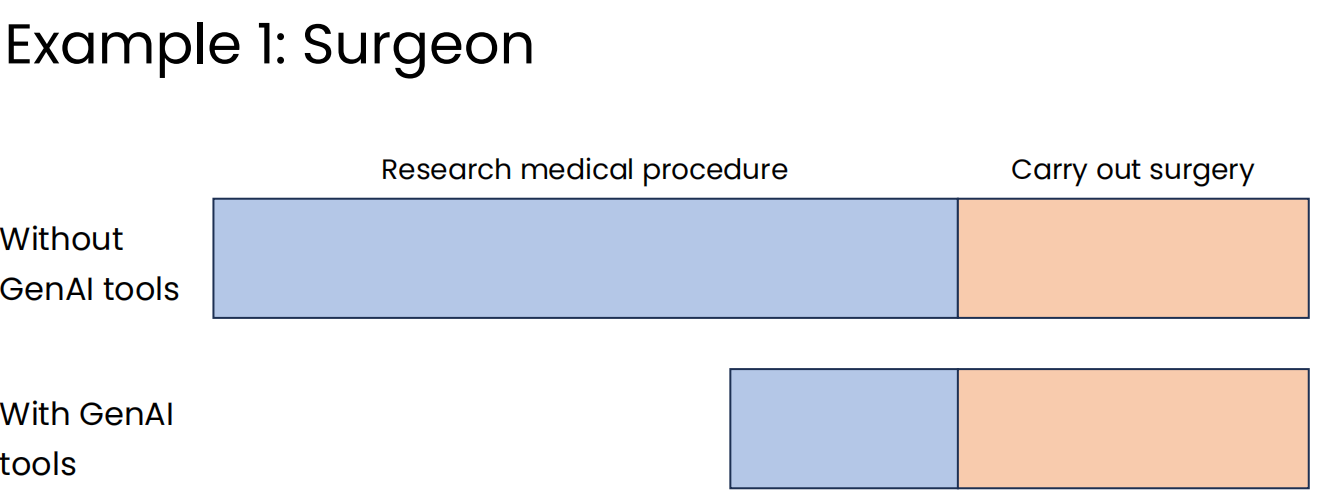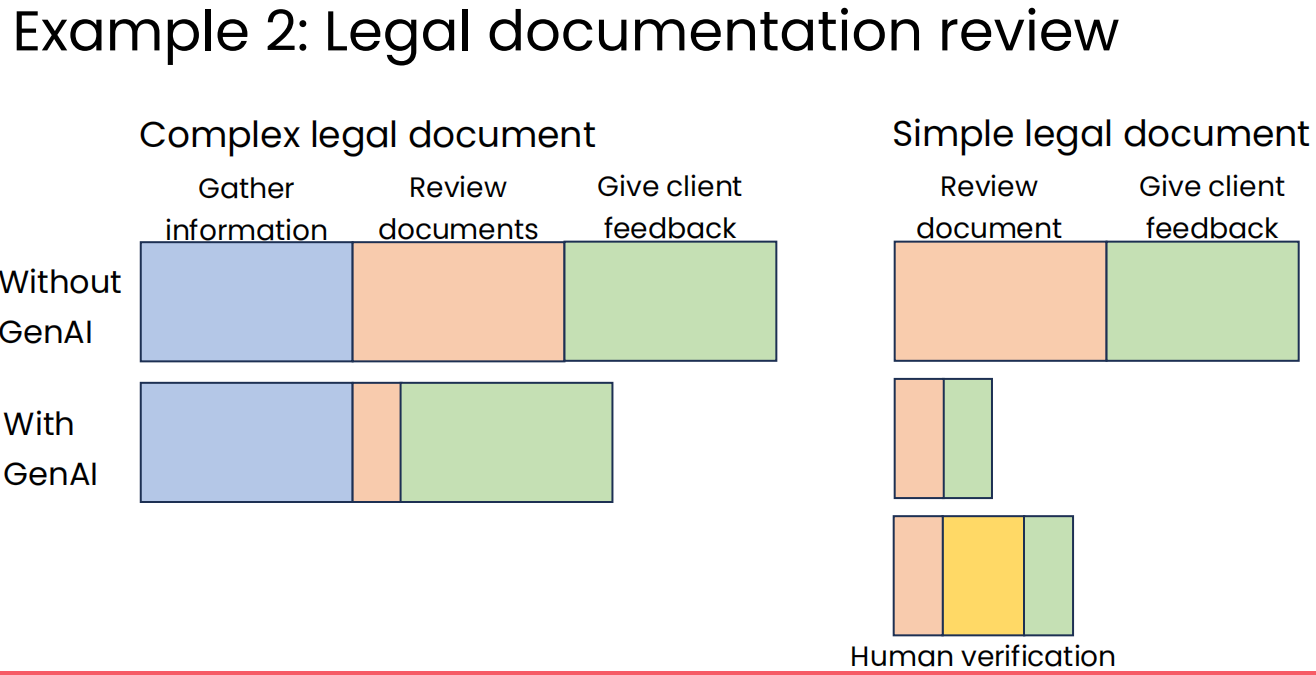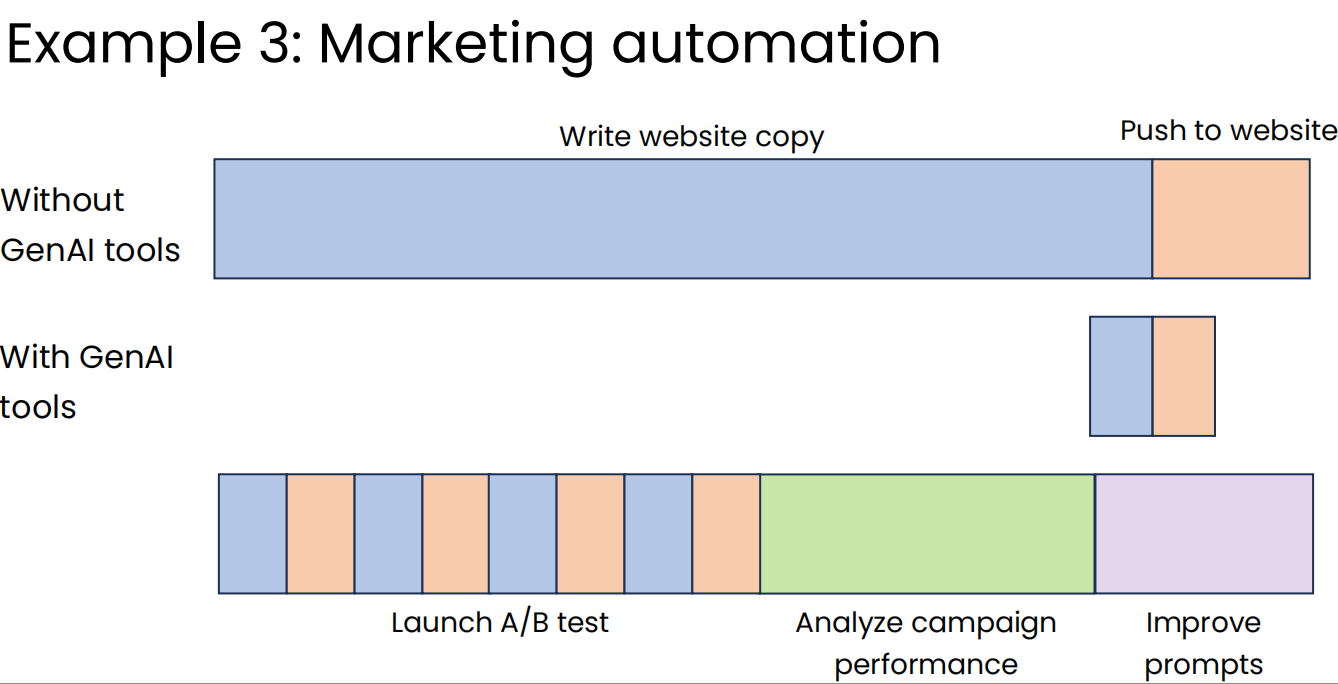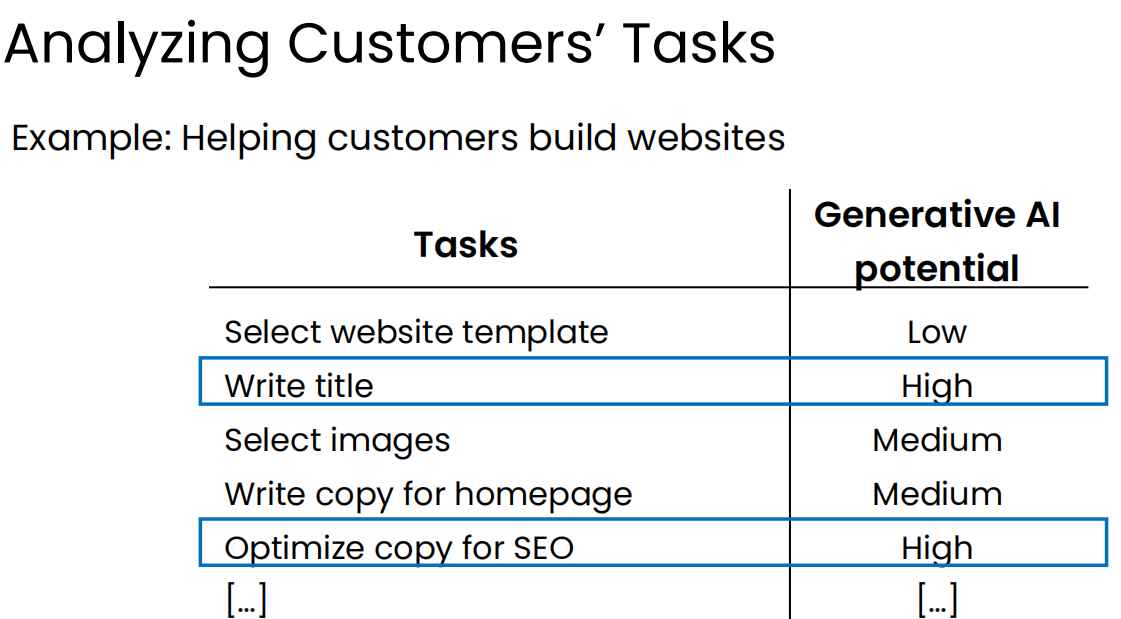AI that can produce high quality content, such as text, images, and audio. Link
Generative AI and business
Task analysis of jobs

Augmentation vs Automation
- Augmentation
- help humans with a task
- recommend a response for a customer service agent to edit/approve
- help humans with a task
- Automation
- automatically perform a task
- automatically transcribe and summarise records of customer interactions
- automatically perform a task
Evaluating AI potential
The potential for augmenting/automating a task depends on:
- technical feasibility (Can AI do it?)
- can a fresh grad following the instructions in a prompt complete the task?
- assess if RAG, fine-tuning, or other techniques can help
- business value (How valuable is it for AI to augment or automate this task?)
- how much time is spent on this task?
- does doing this task significantly faster, cheaper or more consistently create substantial value?
New workflows and new opportunities




Teams to build generative AI Software
software engineer
- writing software applications
- ideally someone who has learned basics of LLMs/prompting machine learning engineer
- implementing AI system
- ideally familiar with LLMs/prompting, RAG, fine-tuning product manager
- identifying and scoping the project
Generative AI and society
Concerns about AI
- amplifying humanity’s worst impulses
- fine-tuning, RLHF
- job loss
- bring a huge amount of growth and create many new jobs in the process
- human extinction
- perfect control not needed to be valuable and safe
Artificial General Intelligence (AGI)
Definition: AI that can do any intellectual task that a human can.
Examples:
- learn to drive a car through ~20 hours of practice
- complete a PhD thesis after ~5 years of work
- do all the tasks of a computer programmer (or any other knowledge worker)
Responsible AI
Dimensions:
- fairness: ensuring ai does not perpetuate or amplify biases
- transparency: Making AI systems and their decisions understandable to stakeholders impacted
- privacy: Protecting user data and ensure confidentiality
- security: Safeguard AI systems from malicious attacks
- ethical use: Ensuring AI is used for beneficial purposes
Tips:
- Build a culture that encourages discussion and debate on ethical issues
- Brainstorm how things can go wrong
- E.g., Could there be issues with fairness, transparency, privacy, security, ethical use?
- Work with a diverse team and include perspectives from all stakeholders
Course Summary
- How generative AI works
- What it can and cannot do
- Common use cases: Writing, reading, chatting
- Generative AI Projects
- Lifecycle of a generative AI project
- Technology options: Prompting, RAG, Fine-tuning
- Implications on Business and Society
- Analyzing tasks in jobs for automation or augmentation potential
- Societal concerns, responsible AI



